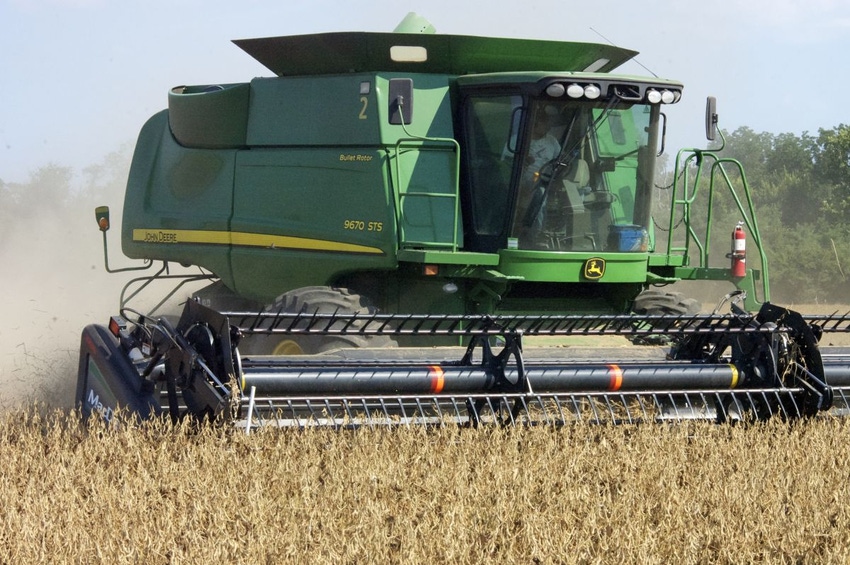
The Louisiana soybean crop began the growing season a bit slow out of the chute.
“We had some beans planted in late March/early April and then we caught a really bad cold spell like a lot of folks across the South,” says Todd Spivey, LSU AgCenter soybean specialist. “It was cold and wet and the beans planted in March had a tough time. Most of them had come up by the time it got cold, but they were slow and stunted. It stayed wet until the last week of April.”
At that point, a lot more beans were planted up to mid-May.
“Then, conditions turned dry and we had another planting break of two or three weeks. Towards the end of May, the planters cranked up again.
“So, there were three distinct plantings this year.”
The soybeans planted in March “never really could quite keep up,” says Spivey. “That early stunting kept them lagging behind all season.”
In June and early July, the state moved into another very dry period. “Across the state, there were several parishes in (serious) drought. Our irrigated beans in the Delta area of the northeast fared much better. But farther south many of the soybeans aren’t irrigated and weren’t as fortunate.”
Good news
Despite that, the growing season had some real positives. “Because of the cold weather we had last winter, the red-banded stinkbug populations were way down. That was certainly a blessing. In 2017, a lot of growers had to treat for the pest three times – some even four times.
“In 2018, though, some growers never treated for stinkbugs even once. Others treated once and knocked them out and they didn’t have many issues the rest of the year.”
Also, because conditions were so dry in June and July, “there wasn’t much disease pressure either. That was also a blessing. We didn’t see many diseases – whether frogeye, aerial blight or anything else – until mid-August.
“At that point, some of the diseases – especially the frogeye – had showed up too late to really do anything. We did start to see some cercospora leaf blight towards the end of the season.”
Louisiana’s southernmost farmers – “typically also sugarcane farmers” – plant very early beans and try to cut around Labor Day. “The first beans cut out of the March planting date didn’t do so well. But once they got into the beans planted through early May, yields were really good. I know growers who averaged in in the 60- to 70-bushel range. Up in the northeast, there were a lot of growers averaging yields in the high 70s to low 80s across their farms.”
So far, says Spivey, one thing that’s been different from 2017 is seed quality. “Because of Harvey coming through last fall, we had some very poor quality. It wasn’t uncommon for damage percentage numbers at the elevators in the 20s and 30s.
“Up until (the week of September 10), our quality has been very good. Most of the elevator damage folks were getting was less than 5 percent. About 10 days ago, we got some rains and stayed a bit messy for a few days. I haven’t heard quality numbers since then but I don’t think they’ll be too bad.”
Halfway done
Spivey suspects “a little more than 50 percent of our bean crop is out of the field. Harvest will really progress this week into early (the week of Sept. 24). I wouldn’t be surprised if, early next week, we’ll be at 75 percent harvested, maybe more.”
One of the reasons for the expected jump: fear of Tropical Storm Isaac.
“We’re keeping an eye on Isaac. The last forecast I saw shows we should be safe until next Monday or Tuesday. Then, we might start catching rains. That’s why folks are going to be going non-stop with harvest before more bad weather hits. We want to get as much out as we can.”
About the Author(s)
You May Also Like




